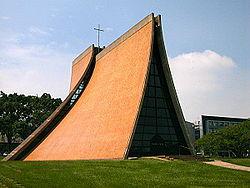

Henry Robinson Luce (April 3, 1898 – February 28, 1967), a magazine publisher, was called "the most influential private citizen in the America of his day." He launched and closely supervised a stable of magazines that transformed journalism and the reading habits of upscale Americans. Time summarized and interpreted the week's news; Life was a picture magazine of politics, culture and society that dominated American visual perceptions in the era before television; Fortune explored in depth the economy and the world of business, introducing to executives avant-garde ideas such as Keynesianism; and Sports Illustrated which probed beneath the surface of the game to explore the motivations and strategies of the teams and key players. Add in his radio projects and newsreels, and Luce created the first multimedia corporation. Luce, born in China to missionary parents, demonstrated a missionary zeal to make the nation worthy of dominating the world in what he called the "American Century."
Life and career
Luce, known to his friends as "Father Time," was born in Tengchow, China, on April 3, 1898, the son of Elizabeth Middleton and Henry Winters Luce, who was a Presbyterian missionary. He received his education in various Chinese and English boarding schools including the China Inland Mission Chefoo School. He was sent to the U.S. at the age of 15 to attend the Hotchkiss School in Connecticut, followed by Yale College.
Luce edited the Hotchkiss Literary Monthly. In 1920, he graduated from Yale College, where he was a member of Alpha Delta Phi and Skull and Bones. At Hotchkiss, he first met Briton Hadden, who would become a lifelong partner. At the time, Hadden served as editor-in-chief of the school newspaper. Luce worked as an assistant managing editor. The two continued to work together at Yale, with Hadden as chairman and Luce as managing editor of The Yale Daily News.
Luce, recalling his relationship with Hadden, said, "Somehow, despite the greatest differences in temperaments and even in interests, we had to work together. We were an organization. At the center of our lives — our job, our function — at that point everything we had belonged to each other."
After being voted "most brilliant" of his class at Yale, he parted ways with Hadden to embark for a year on historical studies at Oxford University. During this time he worked as a cub reporter for the Chicago Daily News. In December 1921, Luce rejoined Hadden to work at The Baltimore News.
Magazines
Nightly discussions of the concept of a news magazine led the two, both age 23, to quit their jobs in 1922. Later that same year the two formed Time Inc. Having raised $86,000 of a $100,000 goal, the first issue of Time was published on March 3, 1923. Luce served as business manager while Hadden was editor-in-chief. Luce and Hadden annually alternated year-to-year the titles of president and secretary-treasurer. Upon Hadden's sudden death in 1929, Luce assumed Hadden's position.
Luce launched the business magazine Fortune in February 1930 and created/founded the pictorial Life magazine in 1934, and launched House & Home in 1952 and Sports Illustrated in 1954. He also produced The March of Time weekly newsreel. By the mid 1960s, Time Inc. was the largest and most prestigious magazine publisher in the world. (Dwight Macdonald, a staffer Fortune during the 1930s, referred to him as "Il Luce", a play on the Italian Dictator Mussolini, who was called "Il Duce").)
During his life, Luce supported many philanthropies such as Save the Children Federation, the Metropolitan Museum of Art and United Service to China, Inc.
Luce, who remained editor-in-chief of all his publications until 1964, maintained a position as an influential member of the Republican Party. Holding anti-communist sentiments, used Time to support right-wing dictatorships in the name of fighting communism. An instrumental figure behind the so-called "China Lobby", he played a large role in steering American foreign policy and popular sentiment in favor of Nationalist leader Chiang Kai-shek and his wife Soong Mei-ling in their war against the Japanese. (The Chiangs appeared in the cover of Time eleven times between 1927 and 1955.)
It has been reported that Luce, during the 1960s tried LSD and reported that he had talked to God under its influence.
Once ambitious to become Secretary of State in a Republican administration, Luce penned a famous article in Life magazine in 1941, called "The American Century", which defined the role of American foreign policy for the remainder of the 20th century (and perhaps beyond).

Luce Memorial Chapel, Tunghai University, Taiwan.
Luce had two children — Peter Paul and Henry Luce III — with his first wife, Lila Hotz. He married his second wife, Clare Boothe Luce in 1935, who had an 11-year-old daughter whom he raised as his own. He died in Phoenix, Arizona in 1967. At his death he was said to be worth $100 million in Time Inc. stock. Most of his fortune went to the Henry Luce Foundation. He is interred at Mepkin Plantation in South Carolina.
He was honored by the United States Postal Service with a 32¢ Great Americans series (1980–2000) postage stamp. Mr. Luce was inducted into the Junior Achievement U.S. Business Hall of Fame in 1977.
According to the Henry Luce Foundation, Henry Luce III died suddenly on September 8, 2005 at 80 years old while visiting his home on Fishers Island, New York, of cardiac arrest. Designed by I. M. Pei, the Luce Memorial Chapel on the campus of Tunghai University in Taiwan was constructed in memoriam of Henry Luce's father.



















